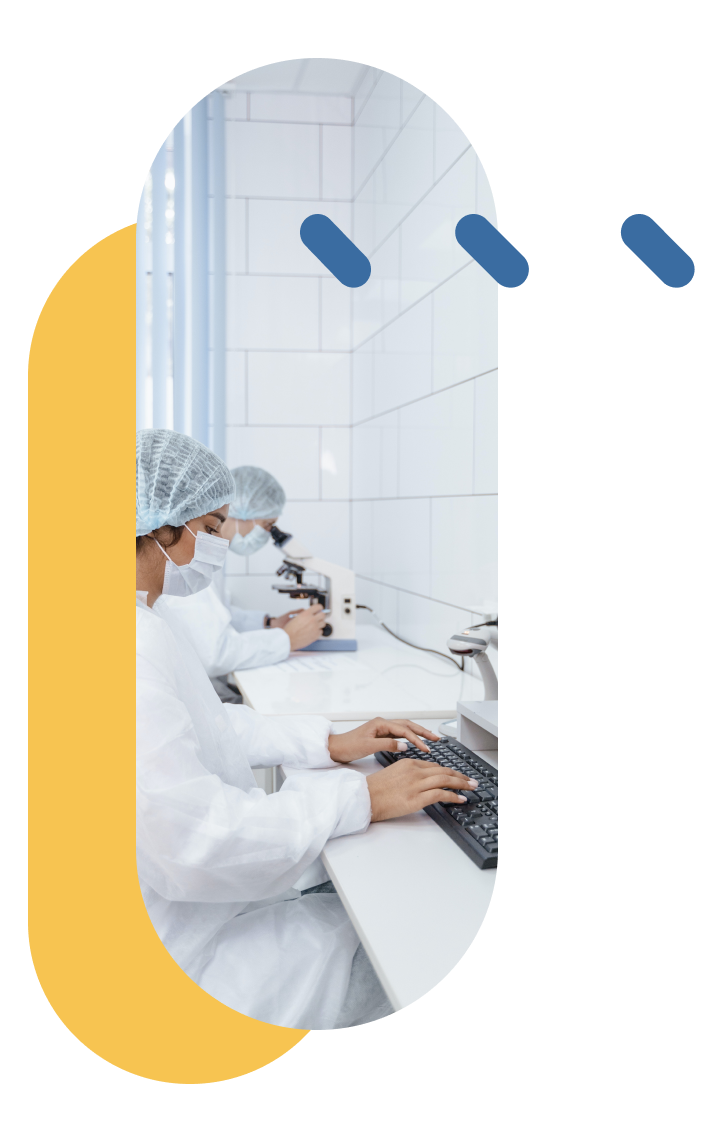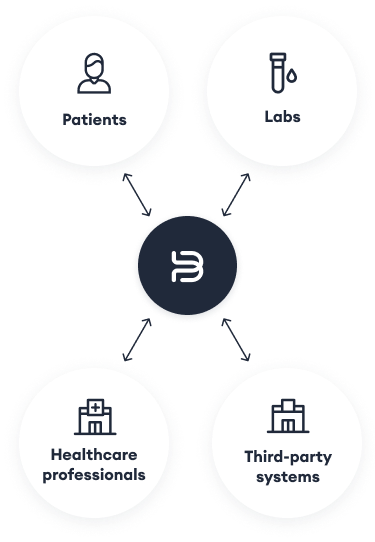Digitization in the laboratory
Every day, laboratory staff work with a wide variety of samples from different medical facilities, have to perform analyses, evaluate data and information, record experiments, and much more. Laboratories make a particularly valuable contribution in the natural sciences and medicine.
But working with countless data and samples can quickly become confusing if it does not follow an orderly structure. Especially in laboratories, sources of error can have serious consequences and should therefore be avoided at all costs.
Unfortunately, the design of many laboratories still stands in the way of moving towards efficiency – despite increasing numbers of trainees, many laboratories are overwhelmed by the volume of new samples and data received every day. Clutter and errors are preprogrammed here.
While digitization is advancing in many occupational sectors, it does not seem to have been implemented far enough in laboratories.
In this article, you will learn why digitization is essential in the laboratory and why it is becoming increasingly indispensable.

The diversity of laboratories
Probably best known are laboratories in the field of natural sciences. In chemistry, physics, biology, pharmacy and medicine, laboratories are valuable institutions. They liaise closely with facilities, evaluating samples, recorded data and tests performed.
But there are also countless labs in engineering, photographic technology, IT security, experimental psychology and economics. In addition, the ever-expanding cosmetics and food and textile industries rely on the work of laboratories.
The tasks of a laboratory
As is already evident in their occurrence, the respective specializations of laboratories are wide-ranging and their fields of work also encompass a diverse spectrum.
The basic tasks of laboratories include …
- … the implementation of experiments
- … Process and quality controls
- … Exams
- … Measurements
- … Calibrations
- … the processing of chemical materials and
- … the production of chemical products (chemical laboratory)

The problem of lack of digitization in the lab
In their work, laboratories rely on a variety of equipment, such as microscopes, coolers, beakers, and electronic measuring devices. The equipment of a laboratory depends on the respective specialization and varies accordingly. For example, in terms of equipment, a biology lab differs from a cosmetics lab in a number of ways.
However, many laboratories are still inconspicuous to this day, insufficiently digitized. Manual tasks kick in where digital innovations could save time. Electronic devices are far too rare to find. Instead, many labs are characterized by a monotonous assortment of equipment that is riddled with different manufacturers. The support of electronic systems is claimed in the fewest cases.
The lack of digitization in the lab means that collating and contextualizing generated data is very complex, error-prone and time-consuming. A unified work system cannot be followed because there is a lack of structure and clarity.
High susceptibility to errors due to inadequate equipment
Thus, many activities in laboratories are still performed manually. Devices are thus manually transferred to systems for the documentation and transfer of results and measurement data, for example. This results in a high susceptibility to errors, as laboratory staff often have to change their work areas during this activity, which has a negative effect on concentration.
Digitization in the laboratory with the help of a laboratory information system
It’s no secret that digitization has already successfully made its way into the industry and is making a valuable contribution to the flow of work. Digital software and systems enrich a wide variety of professions with their technical standards and it is hard to imagine life without them.
Exactly this innovation already exists for laboratories in the form of laboratory information systems (LIMS).
What is a laboratory information system?
Laboratory information systems comprise all EDP applications used in sample-oriented laboratories. They are designed to sustainably support laboratories in all their work areas with state-of-the-art technology.
Their duties include:
- Data processing
- Provision of information
- Access to databases for research purposes
- Documentation of laboratory activities
- Device control
- Analysis of scientific experiments
- Storage and creation of a register of collected data
Laboratory information systems are modular, which means that various functions are available to you, which you can add to the software as needed. Thus, LIMS are completely customizable and adaptable to the work areas of your laboratory.
Laboratory information systems connect medical facilities and laboratories in both directions so that all information, such as test results or sensitive personal data, can be communicated securely and quickly.


The advantages of a laboratory information system
Basically, laboratory information systems with their all-encompassing functions serve to improve communication in your laboratory as well as to seamlessly connect workflows.
Digitization in the laboratory by means of a laboratory information system brings many advantages:
- Fast communication between your lab and other sites
- great time savings due to automated workflows
- Minimization of error sources
- clear storage and management of all data
- reliable protection of sensitive data by means of data encryption
- Customizability thanks to individual modules
- more efficient workflow
Successful digitization in the lab
But how do you integrate a laboratory information system into your laboratory? For this purpose, we have created a clear guide for you below, which will lead you point by point to the complete digitization of your laboratory.
1. create access to devices and systems
First, you must ensure that the laboratory information system is able to provide access to your existing equipment and systems. This creates connections that enable the LIMS to record and manage data that has already been stored.
2. contextualize the data
Once the connections have been created, the next step is to contextualize the recorded data. This means that the data and information will be related and associated with your devices, systems and records. For example, the LIMS reads data on upcoming experiments and relates it to the current inventory of required materials, which determines the procurement of consumables.
Processes can thus be automated through the electronic transfer of data.
3. augmented reality
Augmented reality is about visualizing recorded information in the context of a laboratory device. For example, laboratory staff can view the next steps of an experiment or obtain information about the maintenance of an instrument.
4. algorithms
Down the road, the LIMS can then make predictions regarding equipment failures or sample qualities thanks to various algorithms, making your workflow much smoother. With the help of regular analyses, typical patterns can be identified that are valuable for working with samples.
More efficiency and safety with Probatix
At Probatix, we focus on medical facilities and want to support them sustainably with our service. Probatix can be flexibly linked to an existing LIS and is thus the front end for your laboratory. In this way, Probatix provides you with sustainable support in your day-to-day work – safely and reliably.
Digitization is also indispensable in the laboratory and will reliably support and noticeably enrich you in the form of our all-encompassing software.
Build on safety, efficiency and communication and take your lab to the next level.
Any questions?
Do you have any unanswered questions? Then simply contact us via our contact form. We will be happy to assist you with any request.